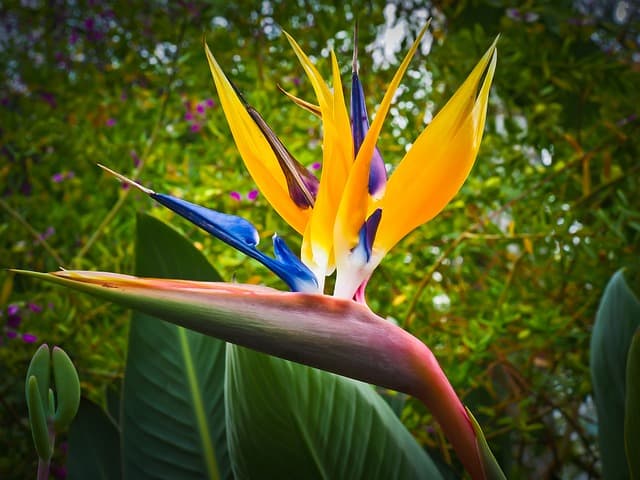Bird of Paradise is a tropical plant known for its stunning, bird-like flowers. While it is a relatively easy plant to care for, it is not immune to problems. One of the most common issues that Bird of Paradise owners face is brown spots on the leaves. These spots can be a sign of a variety of different problems, from fungal diseases to pest infestations.
Identifying the cause of bird of paradise brown spots on leaves is the first step in treating the problem. In some cases, the spots may be caused by a lack of water or nutrients, while in others, they may be a sign of a more serious issue.
Fortunately, there are a number of steps that can be taken to prevent and treat brown spots on Bird of Paradise leaves, from adjusting watering and fertilization schedules to using insecticidal soaps and neem oil sprays.
Key Takeaways
- Brown spots on Bird of Paradise leaves can be caused by a variety of factors, including fungal diseases and pest infestations.
- Identifying the cause of brown spots is the first step in treating the problem, and prevention is key to keeping your plant healthy.
- Taking steps to adjust watering and fertilization schedules, using insecticidal soaps and neem oil sprays, and understanding the specific needs of your Bird of Paradise can all help prevent and treat brown spots on the leaves.
See these other top posts in this category:
Identifying Brown Spots on Bird of Paradise Leaves
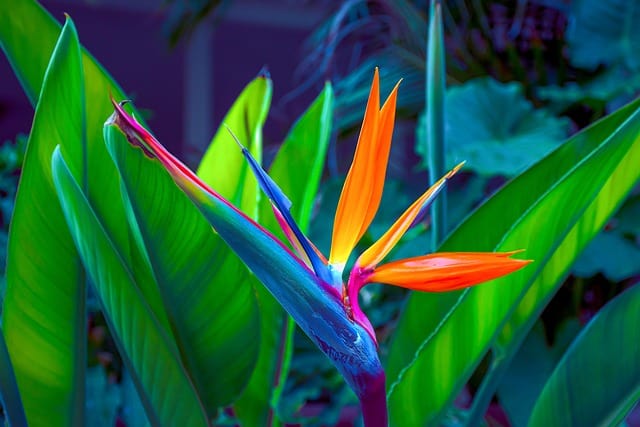
Bird of Paradise plants are known for their large, vibrant leaves that resemble those of a banana tree. However, if you notice brown spots on the leaves of your Bird of Paradise plant, it could be a sign that something is wrong. Here are some ways to identify brown spots on Bird of Paradise leaves:
1. Check for Fungal Infections
Fungal infections are one of the most common causes of brown spots on Bird of Paradise leaves. These infections can be caused by overwatering, poor drainage, or high humidity levels. If you notice brown spots that are accompanied by a white or gray powdery substance on the leaves, it could be a sign of a fungal infection.
2. Look for Nutrient Deficiencies
Nutrient deficiencies can also cause brown spots on Bird of Paradise leaves. If your plant is not getting enough nutrients, it may develop brown spots on the leaves. This can be caused by over-fertilization, poor soil quality, or lack of sunlight.
3. Check for Insect Infestations
Insect infestations can also cause brown spots on Bird of Paradise leaves. If you notice tiny holes or bite marks on the leaves, it could be a sign of an insect infestation. Common insects that can cause brown spots on Bird of Paradise leaves include spider mites, mealybugs, and scale insects.
4. Identify Leaf Spots
Leaf spots are another common cause of brown spots on Bird of Paradise leaves. These spots are usually circular or irregular in shape and can be caused by a variety of factors, including fungal infections, bacterial infections, and insect infestations.
5. Look for Leaf Blight
Leaf blight is a fungal disease that can cause brown spots or patches on the leaves of Bird of Paradise plants. This disease can spread quickly and can cause significant damage to the plant if left untreated.
Bird of Paradise Brown Spots – 5 Common Problems
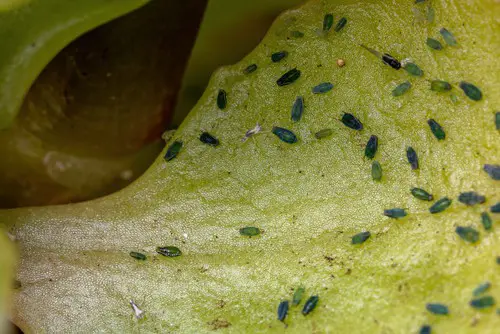
Bird of Paradise plants are known for their beautiful and vibrant foliage. However, brown spots on the leaves can be an indication of underlying issues that need to be addressed. Some of the most common causes of brown spots on Bird of Paradise leaves are discussed below.
1. Fungal Infection
Fungal disease is a common reason for brown spots on Bird of Paradise leaves or stems. This can occur due to overwatering, which leads to waterlogged soil and root rot. Gray mold is another fungal disease that can cause brown spots on the leaves.
The appearance of the spots on the leaves will depend on the severity and how far advanced the disease is.
2. Pest Infestation
Pests such as spider mites, thrips, aphids, and scale can also cause brown edges on Bird of Paradise leaves. These pests feed on the sap inside the leaves and can cause significant damage if left untreated. To treat an infestation, try using an insecticidal soap or neem oil spray.
3. Sunburn
Bird of Paradise plants require bright, indirect light to thrive. Direct sunlight can cause sunburn, which can lead to brown spots on the leaves. To prevent sunburn, place the plant in an area with bright, indirect light.
4. Over-Fertilization
Over-fertilization can cause brown spots on Bird of Paradise leaves. When too much fertilizer is applied, it can burn the roots and cause the leaves to turn brown. To prevent over-fertilization, follow the instructions on the fertilizer package and avoid applying more than recommended.
5. Edema
Edema occurs when the plant takes up more water than it can use, causing the cells to burst and form brown spots on the leaves. This can occur due to overwatering, high humidity, or poor air circulation. To prevent edema, avoid overwatering and ensure good air circulation around the plant.
Preventing Brown Spots
Preventing brown spots on bird of paradise leaves requires proper care and attention. Here are some tips to prevent brown spots:
1. Watering Schedule
Overwatering or underwatering can lead to brown spots on bird of paradise leaves. It is important to water the plant on a regular schedule and not let the soil dry out completely. The frequency of watering depends on the temperature and humidity of the environment. A good rule of thumb is to water the plant when the top inch of soil is dry to the touch.
2. Fertilizing
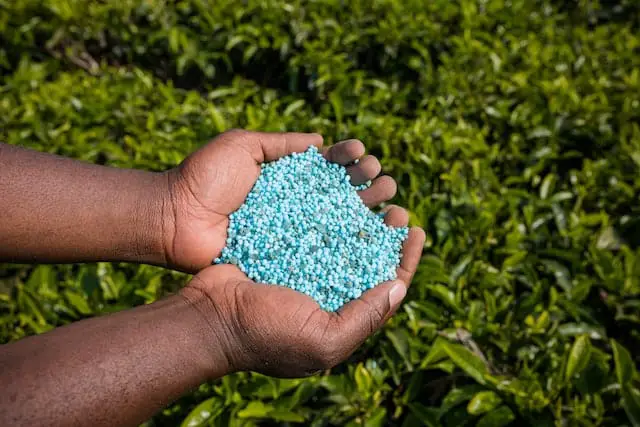
Fertilizing bird of paradise plants too often or with too much fertilizer can lead to brown spots on the leaves. It is recommended to fertilize the plant once every two to three months during the growing season. Use a balanced fertilizer and follow the manufacturer’s instructions.
3. Pruning
Pruning bird of paradise plants can help prevent brown spots by removing dead or damaged leaves. It also promotes healthy growth and improves the plant’s overall appearance. Use clean and sharp pruning shears to avoid damaging the plant.
4. Water Quality
The quality of water used to water bird of paradise plants can affect their health. Hard water or water with high levels of chlorine or fluoride can cause brown spots on the leaves. It is recommended to use filtered or distilled water when possible.
5. Well-Draining Soil
Bird of paradise plants require well-draining soil to prevent waterlogging and root rot, which can lead to brown spots on the leaves. Make sure the pot has drainage holes and use a soil mix that contains perlite or sand to improve drainage.
6. Indirect Sunlight
Bird of paradise plants thrive in bright, indirect sunlight. Direct sunlight can scorch the leaves and cause brown spots. Place the plant near a window that receives bright, indirect sunlight or use a sheer curtain to filter the light.
7. Taking Care
Taking care of bird of paradise plants requires attention to detail and consistency. Regularly check the plant for signs of pests, diseases, or stress. Keep the plant in a stable environment with consistent temperature and humidity levels. With proper care, bird of paradise plants can thrive and remain free of brown spots on their leaves.
Treatment of Bird of Paradise Brown Spots on Leaves
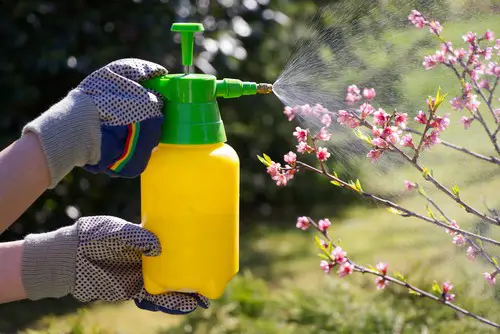
Treatment of brown spots on bird of paradise leaves depends on the cause of the problem. If the brown spots are caused by root rot, the infected roots should be removed, and the plant should be repotted in fresh soil. Overexposure to heat or sun can be treated by moving the plant to a shadier location.
If the brown spots are caused by nutrient deficiency, the plant should be fertilized with a balanced fertilizer according to the manufacturer’s instructions. Fertilizer burn can also cause brown spots on leaves, so it is important not to over-fertilize the plant.
Insect infestation can also cause brown spots on bird of paradise leaves. Mealybugs, for example, can be treated with an insecticide or insecticidal soap. Pesticides can also be used to control other pests.
Fungal infections such as gray mold and leaf spots can be treated with fungicides. Neem oil is a natural option that can be used to treat fungal infections. When using a fungicide, it is important to follow the manufacturer’s instructions carefully.
Misting the leaves of the plant can help to prevent brown spots caused by edema. Overhead watering should be avoided as it can lead to the development of fungal infections. If the plant is infected with a fungal disease, it is important to remove the infected leaves and disinfect pruning tools with rubbing alcohol to prevent the spread of the disease.
Understanding Bird of Paradise
Bird of Paradise is a flowering plant that is native to South Africa. It is also known as Strelitzia. The plant is small in size and grows up to a height of 4 to 5 feet. The roots of the plant are thick and fleshy and grow deep into the soil. The stems are long and slender and bear beautiful flowers.
The flowers of the Bird of Paradise plant are unique and beautiful. They are shaped like a bird’s beak and have bright colors like yellow and orange. The flowers grow in clusters and bloom throughout the year. The plant is known for its ability to produce flowers even in adverse conditions.
The leaves of the Bird of Paradise plant are large and green. They play a vital role in photosynthesis, which is the process by which plants convert sunlight into energy. However, sometimes the leaves can develop brown spots, which can be a cause for concern.
Brown spots on the leaves of the Bird of Paradise plant can be a sign of various problems. The brown spots can start as small patches and eventually spread, causing the leaves to dry out and eventually die. The swelling of the leaves is also a sign of a problem.
Dealing with Pests
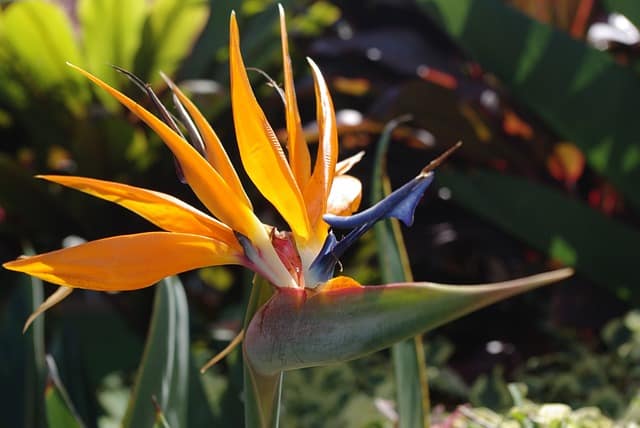
Bird of Paradise plants can be susceptible to pest infestations, which can cause brown spots on the leaves. Common pests that can attack Bird of Paradise plants include mealybugs, scale, aphids, and spider mites. If left untreated, these pests can cause significant damage to the plant.
One effective way to control pest infestations is to use insecticidal soap or neem oil spray. These products can be applied directly to the leaves and stems of the plant to kill and repel pests. It is important to follow the instructions on the label carefully and to use the product as directed to avoid damaging the plant.
Another option for controlling pests is to use pesticides. However, it is important to choose a pesticide that is specifically designed for use on Bird of Paradise plants and to follow the instructions carefully. It is also important to use pesticides responsibly and to avoid using them excessively, as this can harm the environment and other beneficial insects.
In addition to using insecticides and pesticides, it is important to keep the plant healthy and well-maintained to prevent pest infestations. This includes providing the plant with proper lighting, watering, and fertilization, as well as regularly inspecting the plant for signs of pests.
If pests are detected, it is important to take immediate action to control the infestation and prevent further damage to the plant.
Specific Issues and Solutions
Brown spots on the leaves of Bird of Paradise plants can be caused by various factors, including fungal infections, watering issues, direct sunlight damage, or pest infestation. Here are some specific issues and solutions to help you identify and treat the problem:
Fungal Infections
If your Bird of Paradise has brown spots on the leaves, it may indicate a fungal infection. Fungal infections can cause yellow spots, curling, and gray mold. To treat fungal diseases, use a fungicide spray. Be sure to follow the instructions on the label carefully. Additionally, avoid getting water on the leaves, as this can encourage fungal growth.
Watering Issues
Overwatering and excess moisture can also cause brown spots on Bird of Paradise leaves. To prevent this, water your plant once every 1-2 weeks, depending on the humidity and temperature of your home.
Additionally, make sure the soil is well-draining and not waterlogged. If you notice brown edges or black spots on the leaves, it may be a sign of overwatering.
Direct Sunlight Damage
Bird of Paradise plants prefer bright, indirect light. Direct sunlight can damage the leaves and cause brown spots. If your plant is getting too much direct sunlight, move it to a shadier spot or use a sheer curtain to filter the light.
Pest Infestation
Pests like spider mites and mealybugs can also cause brown spots on Bird of Paradise leaves. These pests produce honeydew, a sticky substance that can attract mold and cause brown spots. To treat pest infestations, use an insecticidal soap or neem oil spray. Additionally, trimming affected leaves can help prevent the spread of pests.
Water and Soil Requirements
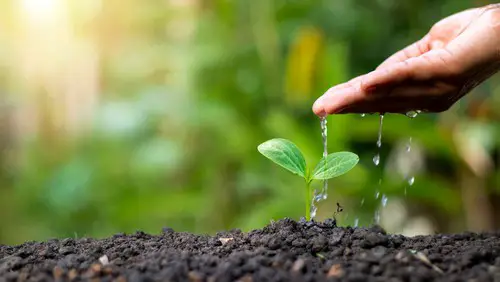
Bird of Paradise plants require well-draining soil to prevent waterlogging. Overwatering can lead to root rot and brown spots on the leaves. On the other hand, underwatering can cause the leaves to turn brown and dry out.
It is recommended to water the plant once a week during the growing season and reduce the frequency during the dormant season. The frequency of watering should be adjusted based on the plant’s environment, such as the level of humidity and temperature.
Tap water can be used to water the plant, but it is important to let it sit for a day before use. This allows the chlorine and fluoride to evaporate, which can be harmful to the plant. Alternatively, rainwater or distilled water can be used.
The quality of water can also affect the health of the plant. Hard water can cause mineral buildup in the soil, which can affect the plant’s growth. It is recommended to use soft water or filter the water before use.
To prevent waterlogging, the soil should be well-draining and should not retain water for long periods. A soil mix that includes perlite or sand can improve drainage. It is important to avoid using heavy clay soil, which can retain water and cause root rot.
Light and Temperature Needs
Bird of Paradise plants require bright, indirect light to thrive. They can also tolerate some direct sunlight, but too much direct sunlight can cause sunburn or scorching of the leaves. If the plant is placed in an area with too little light, it may not flower or grow properly.
In terms of temperature, Bird of Paradise plants prefer warm temperatures between 50-72°F (10-22°C). They can tolerate some fluctuations in temperature, but sudden changes can cause stress and damage to the plant. Overexposure to heat or sun can also cause brown spots on the leaves.
If the plant is kept indoors, it is important to ensure that it receives enough light. Placing it near a window that receives bright, indirect light is ideal. Artificial lights can also be used to supplement natural light if necessary.
If the plant is kept outdoors, it is important to protect it from extreme temperatures. Frost can damage the plant, so it should be brought indoors or covered if the temperature drops below freezing. In hot climates, it is important to provide some shade during the hottest parts of the day to prevent overexposure to the sun.
Nutrition and Fertilization
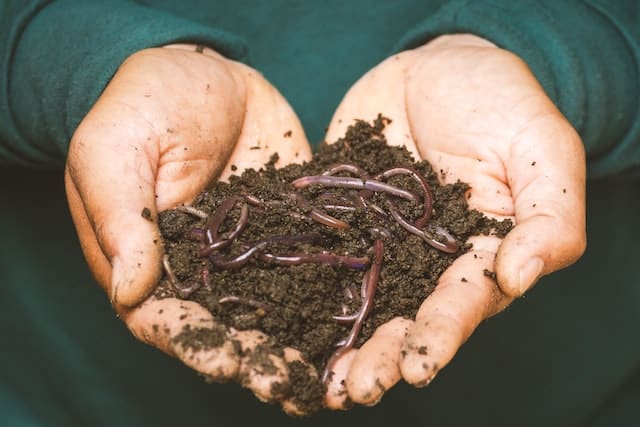
Bird of Paradise plants require proper nutrition to grow and thrive. Fertilizing your plant is a crucial aspect of its care routine. However, over-fertilization can cause more harm than good.
Fertilizer burn is a common issue that can occur when you use too much fertilizer. It can lead to brown spots on the leaves, which can be mistaken for a disease or pest infestation. To avoid fertilizer burn, it is important to follow the instructions on the fertilizer package and not exceed the recommended dosage.
Nutrient deficiency can also cause brown spots on the leaves. For example, if your plant is not getting enough nitrogen, its leaves may start to turn yellow and then brown at the tips and edges. To prevent nutrient deficiency, it is important to use a balanced fertilizer that contains all the essential nutrients your plant needs.
When fertilizing your Bird of Paradise, it is best to use a slow-release fertilizer. This type of fertilizer releases nutrients slowly over time, providing a steady supply of nutrients to your plant. You can also use a liquid fertilizer, but be sure to dilute it properly to avoid over-fertilization.
It is recommended to fertilize your Bird of Paradise every three months during the growing season. However, it is important to note that the frequency of fertilization may vary depending on the type of fertilizer you use and the specific needs of your plant.
Frequently Asked Questions
What causes brown spots and curling leaves on Bird of Paradise?
Brown spots and curling leaves on Bird of Paradise can be caused by a variety of factors, including fungal leaf spot disease, gray mold, poor water quality, and pest infestation. Overwatering or underwatering can also lead to brown spots and curling leaves.
How do I treat fungal leaf spot disease on my Bird of Paradise?
To treat fungal leaf spot disease on your Bird of Paradise, you can try using a fungicide spray or removing the affected leaves. It’s important to improve air circulation and avoid getting water on the leaves, as excess moisture can contribute to fungal growth.
What is gray mold and how does it affect Bird of Paradise?
Gray mold is a fungal disease that can affect Bird of Paradise. It causes grayish-brown spots on the leaves and can spread quickly in humid conditions. To prevent gray mold, avoid overcrowding your plants and improve air circulation.
Why are there black spots on my Bird of Paradise stem?
Black spots on the stem of your Bird of Paradise can be a sign of a fungal disease or pest infestation. It’s important to remove the affected parts of the plant and treat with a fungicide or pesticide as necessary.
What can I do to fix brown and yellow spots on my Bird of Paradise?
To fix brown and yellow spots on your Bird of Paradise, it’s important to identify the underlying cause. Overwatering, underwatering, poor water quality, pest infestation, and nutrient deficiencies can all contribute to brown and yellow spots.
Adjusting your watering schedule and using a fertilizer specifically formulated for tropical plants can help improve the health of your Bird of Paradise.
How can I prevent brown spots on my Bird of Paradise leaves?
To prevent brown spots on your Bird of Paradise leaves, it’s important to maintain proper watering and avoid getting water on the leaves. Providing adequate air circulation, avoiding overcrowding, and using a well-draining soil mix can also help prevent fungal growth and pest infestation.

Hey, I’m Lisa and I’ve been an avid gardener for over 30 years. I love writing, talking and living in the garden! Feel free to connect with me on my socials below

